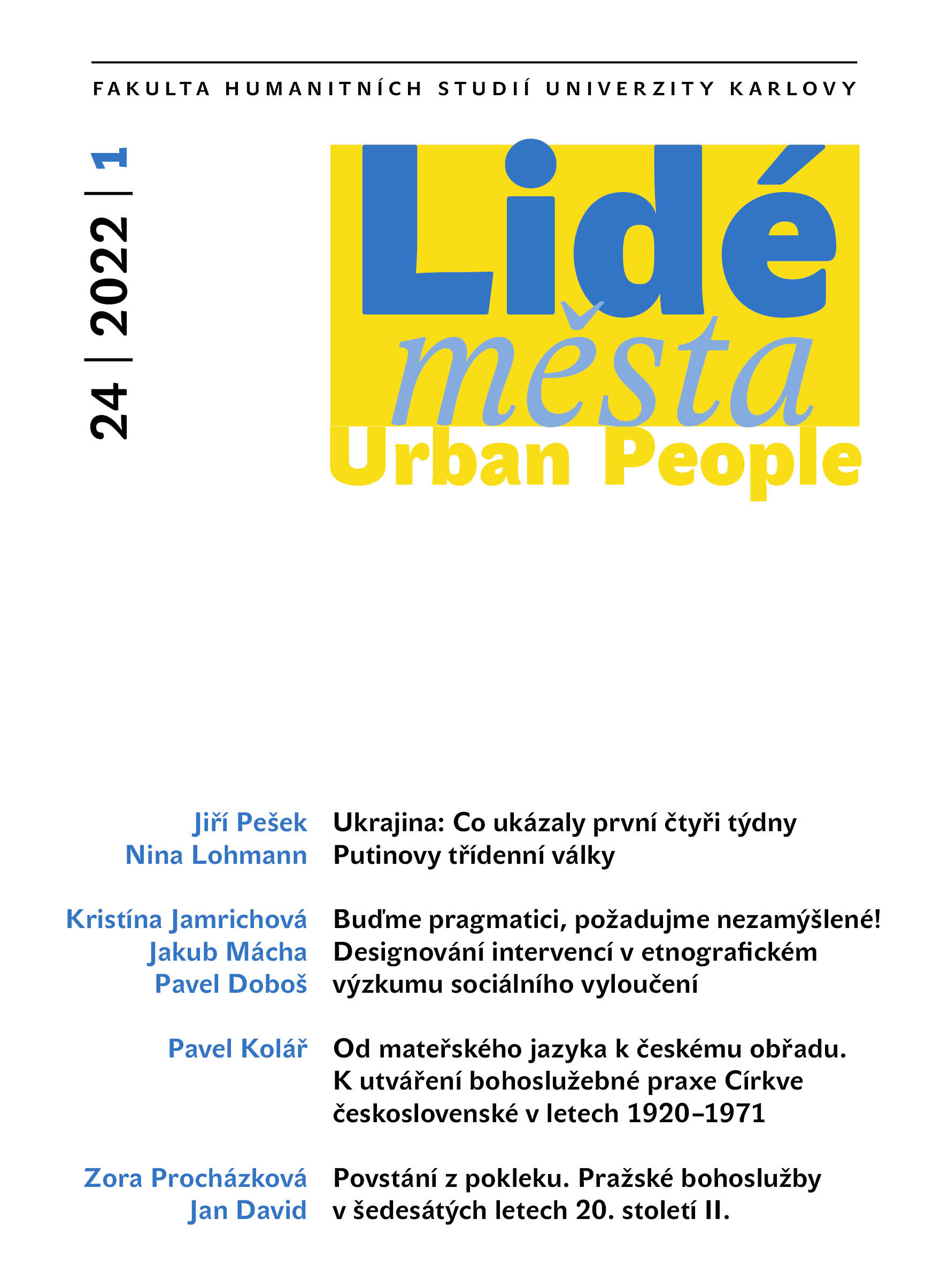Od mateřského jazyka k českému obřadu. K utváření bohoslužebné praxe Církve československé v letech 1920–1971
From Using the Native Language to a Czech Liturgy. On the Formation of Church Services in the Czechoslovak Church in the Years 1920–1971
Author(s): Petr KolářSubject(s): Christian Theology and Religion, Social Sciences, Theology and Religion, History of Religion
Published by: Univerzita Karlova v Praze - Fakulta humanitních studií
Keywords: Czechoslovak (Hussite) Church; liturgy; vernacularization; cremation; church architecture; Farský Karel; Tuháček Alois; Kalous František; Rutrle Otto;
Summary/Abstract: The liturgical practice of the Czechoslovak Church (Cčs) represented a reform of the traditional ritual practices of Western Christianity. The Cčs’ reform proposals are interpreted as being similar to those launched by the contemporary modern liturgical movement in the Roman Catholic Church. The article deals with the principles of the reform set by the first Church council, interprets the Church’s eucharistic rite (the Liturgy of Karel Farský) and compares it with the Tridentine rite, briefly characterizes sacramental rites and occasional services, and presents an outline of the first missal (created by Alois Tuháček). Then, it points to the developments in the Church’s liturgical practices in the decades following the end of WW II until 1971, primarily focusing on the Church’s response to the state’s anti-clerical politics and atheist indoctrination. Finally, the article discusses the Church’s funeral rites, including the ritual provisions for cremation, and introduces the Church’s concept of the liturgical space. Occasionally, it refers to the liturgical diary notes recorded by Pospíšilová and David during their visits Prague parishes of the Church.
Journal: Lidé města
- Issue Year: 24/2022
- Issue No: 1
- Page Range: 59-88
- Page Count: 30
- Language: Czech

